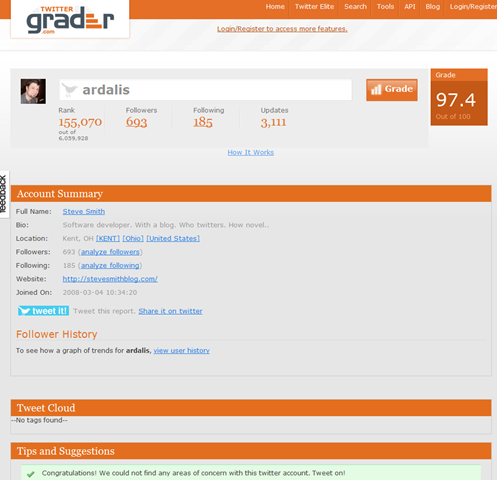Inbound Marketing and Small Business Trends
Date Published: 03 February 2010

I recently read Dharmesh’s and Brian Halligan’s Inbound Marketing book, which has a lot of good tips for startup companies to follow in order to maximize their online reach and popularity. Many of the tips are pretty obvious: start a blog, get people linking to you, build a following on twitter. But there are some that are pretty easy to overlook, and at the end of the book is a very good appendix that is a checklist for any startup or small business to follow.
One of the key points that describes the importance of Inbound Marketing, is that it is difficult for your competitors to one-up. First, let me explain that inbound marketing differs from outbound in that you are helping customers who may be looking for you or a service like yours, rather than reaching out to potential customers and interrupting them during whatever they’re doing and trying to drag them to your site. There was a great quote from Dharmesh that actually prompted me to buy this book:
With Pay-Per-Click…You’re basically at the mercy of the stupidest market entrant.
If the only reason people are coming to your web site is because you spend a lot on advertising, and in particular, on PPC advertising, you have no barrier to entry protecting you from competitors. In fact, the more efficiently you tweak your PPC keywords to ensure you’re getting a great ROI out of them, the more vulnerable you are to a stupid new competitor who has no idea what these keywords should be worth, but who has a pile of venture capital cash to spend building initial market share. When this happens, the effect will be instantaneous, and without warning.
With inbound marketing, on the other hand, over time you build compelling content and spread the word about this content via social networks like your own blog, twitter, youtube, facebook, etc. Over time, you amass a large amount of such content, as well as a large following of customers and fans who make up your community. If a new player enters the market, whether they spend a bunch of money on ads or a bunch of effort building up their own inbound marketing efforts, you will see them coming. The effects will not happen overnight, and any advances they make on your market share will be gradual and hard-fought.
I had a chance to hear Anita Campbell speak last night in Hudson, Ohio, where the agile consulting company I founded has its offices. Her presentation was on “2010 Small Business Trends and Opportunities” and included a lot of good information that related to the idea of inbound marketing, I thought. She also recommend a couple of other books I’ll probably pick up:The Social Media Bible and The New Community Rules.
Anita also talked about a few different sites that I want to check out (so this is sort of my own notes-to-self to follow up on):
- PointBanner.com– custom banner design, simply and easily.
- Knowem.com– search over 350 social media sites for your company/brand/user name to see if it is available. For a fee, they’ll register/signup the username on the sites for you.
- GetListed.org– Check local listings for your business, add it to local listings. Great for businesses with a physical address.
- SBA – Government Contracting How-To– Site with courses on getting started on government contracts
- Register in Government Contractor Database– What it sounds like.
- Retargeter– ads on popular sites that redirect your own users back to your site, for a flat monthly fee.
While I’m listing resources, another couple that are good from the Inbound Marketing book are:
- Website Grader– Generates an SEO report for your web site with optional comparison to competitors.
- Twitter Grader– Same idea, but for twitter.
The book recommends, and I agree, tracking key individuals’ and your company’s results on a somewhat regular basis, so you can see whether you are improving. You should track things like your twitter followers, inbound links, total indexed pages on your web site, etc. and chart them over time (perhaps relative to your competitors) so you know if your social/inbound marketing efforts are succeeding with some concrete results. Here’s an example twitter grader result:

Another trend for small businesses is the use of cloud and third-party services to support the business. For instance, it’s very popular now to get customer feedback via a third party service like UserVoice or GetSatisfaction. Need to track customers and leads? Many businesses love to hate SalesForce.com. Need a blog? There are plenty to choose from. Help desk? Check out ZenDesk.com. Customer surveys? Try SurveyMonkey.com. Planning for an event? Try EventBrite, which I use to organize the monthly Hudson Software Craftsmanship meetings. Need a newsletter? Try ConstantContact. Whereas a few years ago businesses would invest a lot of time into building these features themselves, today you can easily outsource these commodity functions to third party sites that focus exclusively on this problem, leaving you to focus on your core business.
Category - Browse all categories

About Ardalis
Software Architect
Steve is an experienced software architect and trainer, focusing on code quality and Domain-Driven Design with .NET.
